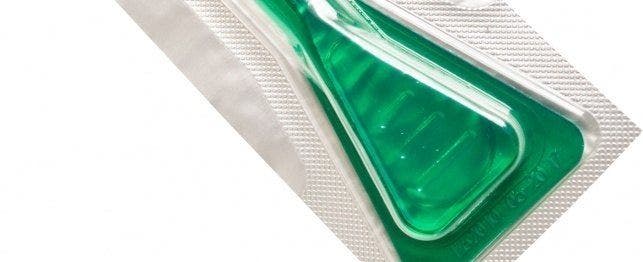
Vectra 3D Toxicity in Cats
Fleas are frustrating and annoying insects that thrive on our dogs and cats and many flea products safe for use on dogs can be toxic to cats, such as Vectra 3D. The component in Vectra 3D that is toxic to cats is “Permethrin”.
Getting rid of fleas is an important and sometimes difficult process. Fortunately, many products are available to reduce the flea population within our homes and on our pets. The most popular products include those supplied in small tubes that are applied to the back of the animal. This type of product generally lasts for about 30 days. The focus of this article is to discuss the toxicity of Vectra 3D, a product marketed for dogs, when cats are exposed either by application or contact with a dog with a recent application.
What is Vectra 3D?
Vectra 3D is a topical insecticide medication applied to the skin of dogs to repel and kill fleas, ticks, mosquitoes, biting and sand flies, lice and some mites. This protection lasts one month after application.
Vectra makes a topical product for cats and kittens that contains the drugs dinotefuran and pyriproxyfen. The Vectra 3D product contains these same medications plus permethrin which makes it only for dogs, as permethrin is an insecticide that is highly toxic to cats.
For more information on flea product toxicities and the toxic component of Vectra 3D, see also Permethrin and Pyrethrin Toxicity in Cats.
Overview of Feline Permethrin Toxicity
Permethrins, a class of synthetic insecticide, has a much greater potential for resulting in toxicity than it’s natural counterpart, pyrethrins. Permethrin based topical flea products are usually labeled “for use in dogs only.” There is a wide safety margin for permethrins in dogs. Cats, however, are exquisitely susceptible to the toxic effects of permethrins. Application of permethrin-based insecticide, like Vectra 3D to a cat will usually result in toxic signs within 6 hours.
What to Watch For
- Drooling
- Paw flicking or ear twitching
- Lethargy
- Muscle tremors
- Vomiting
- Difficulty walking/ataxia (stumbling when walking)
- Seizures
Diagnosis of Vectra 3D Toxicity in Cats
The diagnosis of Vectra 3D (permethrin) toxicity is based on physical exam findings as well as a recent history of topical flea product application. There have also been reports of cats developing a toxicity when they are directly exposed to the product after it has been applied to a dog in the house or they groom the product off of a canine housemate. Although skin and hair tests can be done to confirm the presence of insecticide, those results may take several days and are often received too late to aid in treatment.
Treatment of Vectra 3D Toxicity in Cats
Treatment involves eliminating any existing product from the body and controlling seizures and muscle tremors. Expect your veterinarian to recommend hospitalization with continuous intravenous fluids. Additional recommendations for treatment may include:
Bathing with a mild dish soap (such as Dawn®) with lukewarm water to remove additional flea product from the pet’s skin and reduce the amount absorbed.
Administering diazepam or phenobarbital for seizure control.
Administering methocarbamol to treat muscle tremors. This may be given multiple times throughout the hospital stay. This medication is usually started as an IV injection and can be continued with the oral pill when your cat’s signs are improving.
For cases with severe signs or those that do not respond to the above therapy, another treatment option is intravenous lipid emulsions (IVLE). This is a solution of medium or long chain triglycerides and is primarily used in critical patients as part of an intravenous nutrition protocol. It has been found that these lipid solutions can help in toxicities that are fat soluble like Vectra 3D (permethrin). Side effects are rare with one time use of the lipid emulsions but can include irritation of the vein where administered (phlebitis), jaundice, anemia, inability of the blood to clot, and a low platelet count. The most common side effect is hyperlipidemia (elevated fats in the bloodstream). This treatment has shown great promise in reducing the signs of toxicity and decreasing the amount of time these cats need to be hospitalized.
If treated early, the majority of pets suffering from Vectra 3D toxicity recover enough to go home within 24-48 hours, although fine muscle tremors may continue for several days. Severity and the length of time that toxicity lasts will depend on the amount of Vectra 3D your cat was exposed to and how sensitive your pet is to this toxicity.
Home Care and Prevention of Vectra 3D Toxicity in Cats
If you suspect your cat may have Vectra 3D toxicity, the most important part of home care is to bathe the pet in lukewarm water using mild dish soap. Do not use flea shampoo and avoid hot water since that will dilate blood vessels in the skin and increase the absorption of the flea product. Also avoid very cold water as decreased body temperature (hypothermia) has been shown to worsen toxic signs.
Once the cat is bathed, contact your veterinarian or local veterinary emergency facility immediately. Additional treatment is likely to be required, see the above section on treatment for a more detailed description on what to expect once you get to your veterinarian’s office.
The best way to prevent toxicity to flea products is to read the labels and follow the directions. If a product is labeled “for use in dogs only,” do not use it on cats. Cats have different metabolisms from dogs and are much more sensitive to certain medications, drug or toxins.
If you are using a flea product like Vectra 3D one of these products on your dog, you should keep them away from your cat until the product is completely dry and do not allow your cat to groom your dog after application of flea products.